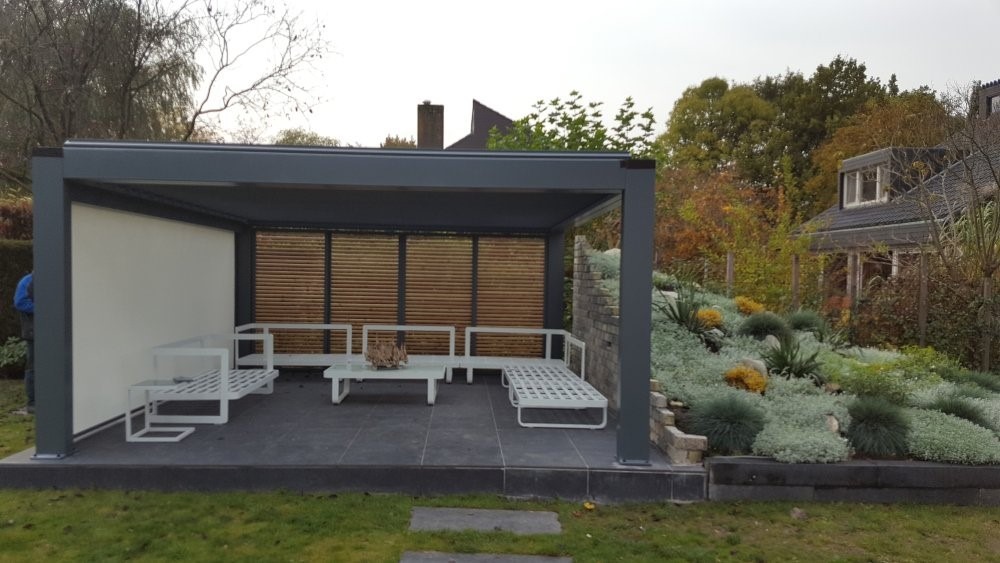
Aluminum Pergola Agava from Soltec
Pergola Agava allows you to have more living space in your backyard. It doesn’t matter if you want it as an addition to your house, or as a freestanding structure with some specific use cases – this aluminium pergola fits a number of various use cases.
The vision of pergola Agava sustainable development is based on aluminium with its infinitive recycling potential. The aluminium is the main element of pergola Agava – it is ubiquitous with a good number of reasons:
- it is lightweight;
- it has exceptional mechanical properties;
- It has flexible transformational possibilities;
- it is resistant to corrosion;
- it is not toxic.
All of the Agava pergolas are made of aluminum, with various design types, allowing for maximum customization and with a plethora of useful features, like drainage grooves, protection from sun and rain, and so on. You can buy a pergola that fits your outdoor space well and looks modern, while making it easy for you to enjoy the hotness of the sunny day and the fresh air on a rainy day, and so much more than that. The choice is in your hands.
Here are a few examples of different applications when it comes to aluminum pergolas:
- A regular aluminium pergola attached to a wall in Slovenia. This one is a standard example of a pergola that is used as an extension of the house for various needs:
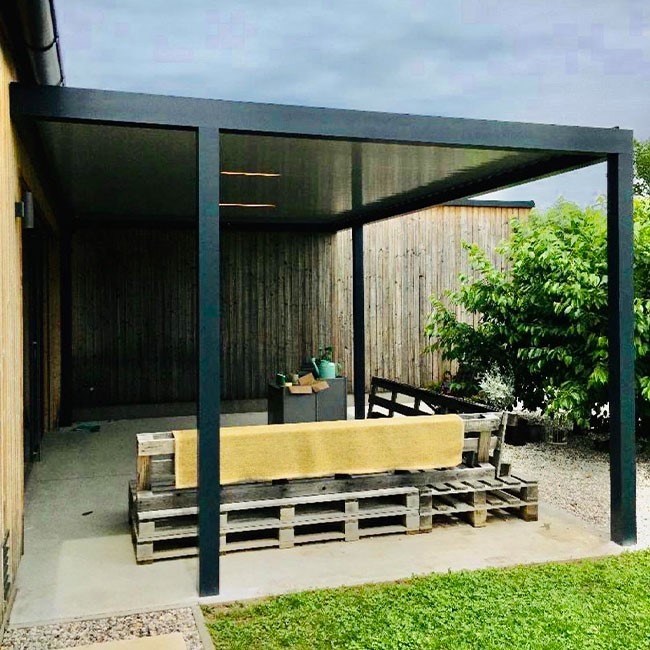
- There’s also another possible option for attached pergolas, an example below is from Austria. As you can see, this pergola from aluminium utilizes the additional material stretched between the pergola’s columns to block the unwelcome effects of sun or other weather conditions from the people inside:
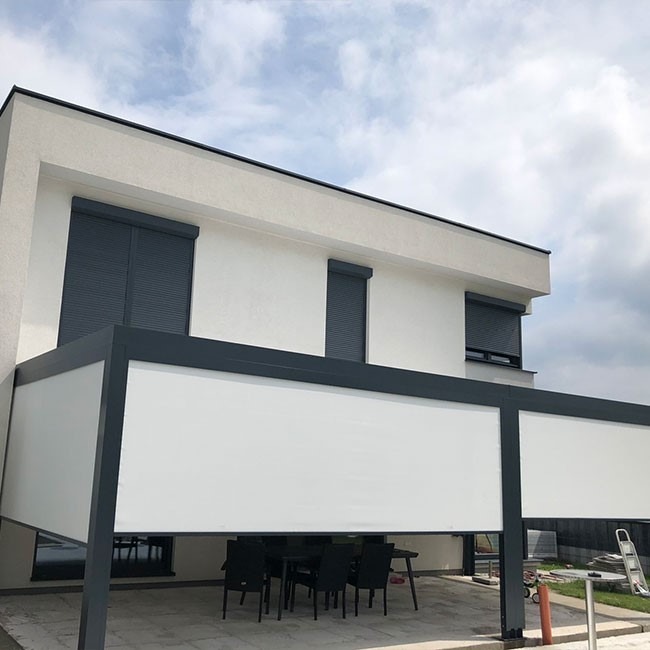
- If you’re wondering if there’s other color palettes to aluminum pergolas aside from the dark one, here’s a good example from Slovenia. In this case a pergola is used and treated as a small extension of an indoor area, with the color palette that matches the overall house’s theme:
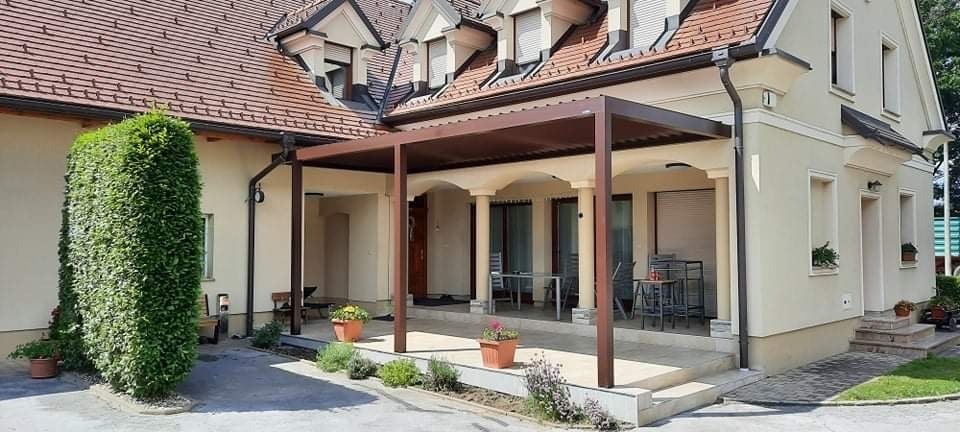
- It would be unfair to say that this pergola design type is applicable for private houses only. Here’s an example of a restaurant in Slovenia that utilizes the same kind of aluminium pergolas as the extension of their space for customers outside of the actual building:
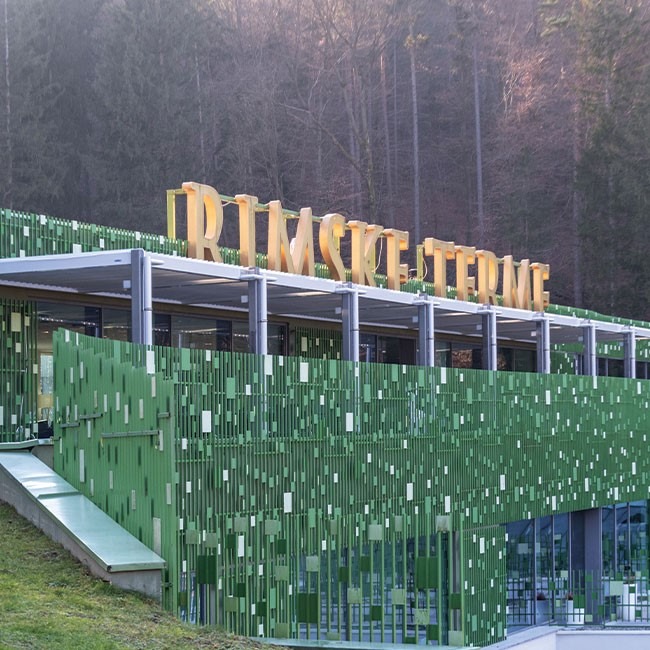
- Of course, not all pergolas from aluminium are meant to be attached to a building of sorts. An example of that is the next pergola from Ljubljana. These freestanding pergolas are meant to create a relatively secluded space in your backyard that is not attached to the house in question (works even better if there’s some sort of natural or artificial protection from weather on the sides of the pergola, like in this case):

- Pergolas made from aluminium can also be used to create a sort of a camping area that is attached to the building but looks like a part of said building. An example below is from Croatia, and it looks more like an extension of a house and less like an actual separate construction.

- A restaurant in Sweden is another example of a pergola appearing like an actual building’s extension. In this case it’s not just the additional sitting area for the restaurant in question, but there’s also a part where orders can be taken, too, making it that much more convenient for customers:
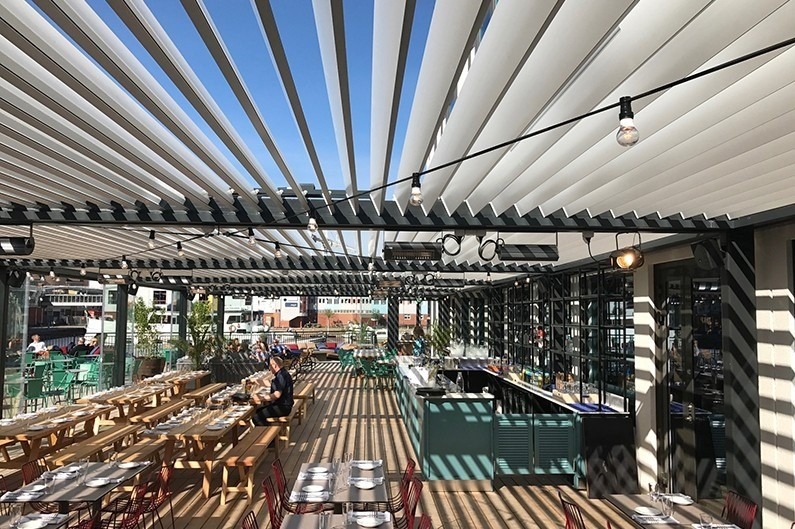
- Another example of a slightly different aluminium pergola appliance is from Switzerland. This one combines the usual setup of a restaurant that consists of a table and several chairs with a more comfortable part with recliners and sofas. This whole ordeal is covered by a freestanding aluminum pergola with appropriate color palette:

- While the overwhelming majority of pergolas are utilizing columns in one way or another as a supporting structure, there are some cases where there’s no such thing involved whatsoever, like in this white pergola example from Slovenia. The relatively small dimensions of this aluminium pergola roof allow it to exist without relying on columns, and the only thing that keeps it in place is a cable that connects the farther end of the pergola’s roof with the side of the building.
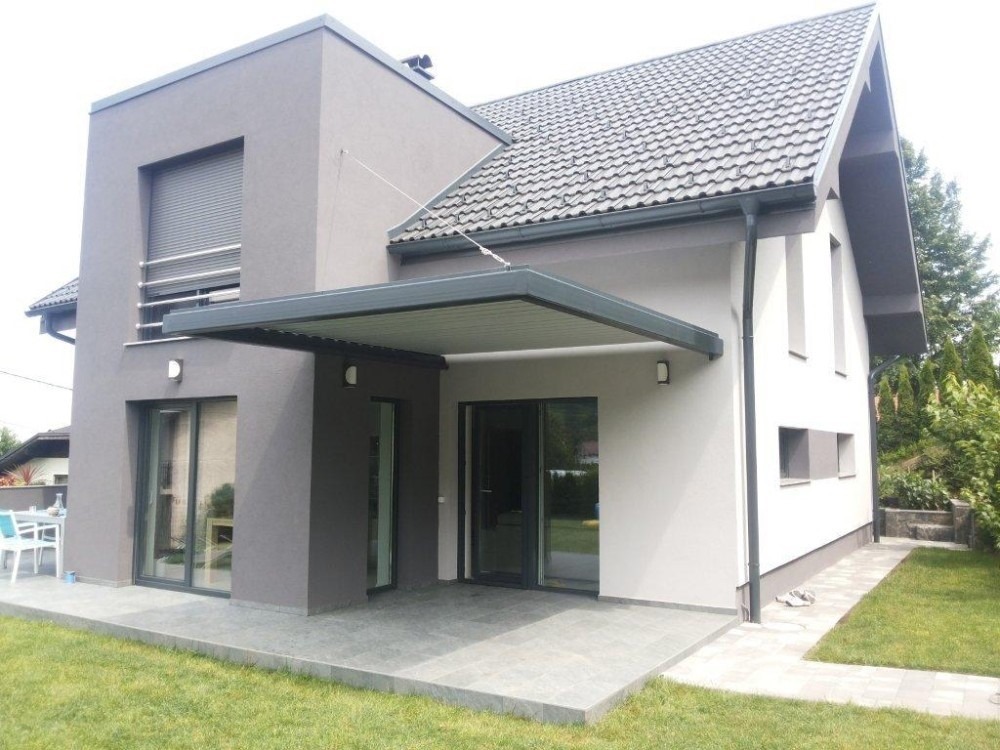
- Combining different pergola options is not uncommon for specific cases and placements, like this example from the Netherlands. While three sides of the pergola might be covered with an expandable fabric, like the left wall, the farthest wall is different and created to support various vines and other specific plants without leaving the inside area vulnerable for various weather conditions. This placement allows for a comfortable intake of fresh air inside of the construction without having to stay under the hot sun or a heavy rain.

